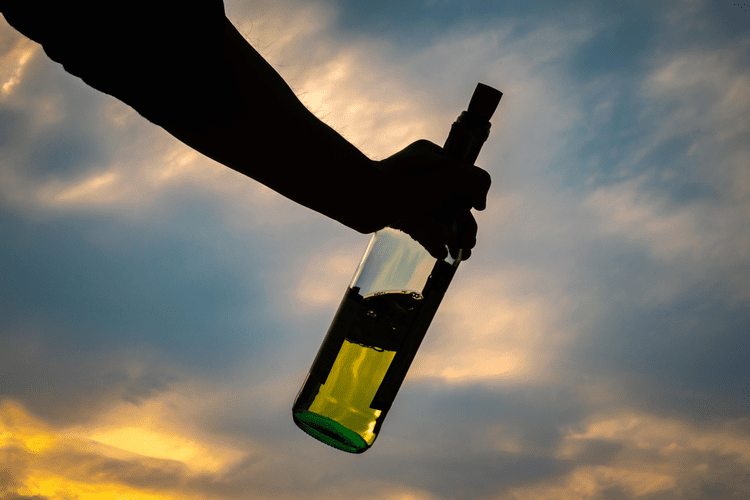What is gas station heroin? Here are the health risks of Tianeptine
The goal, Rutherford explains, is to construct a “recovery story” built from both qualitative and quantitative data for each individual seeking support. He states that research shows that family-based support for addiction recovery is critical but often not obtained. Yet sustained, personalized recovery services are essential because treatment is just the first step toward growth and finding a high quality of life without substances. SAMHSA’s working definition of recovery defines recovery as https://www.edurh.ru/serdtse-na-dvoih.html a process of change through which individuals improve their health and wellness, live self-directed lives, and strive to reach their full potential. Recovery signals a dramatic shift in the expectation for positive outcomes for individuals who experience mental and substance use conditions or the co-occurring of the two. The institute emphasizes a holistic approach to recovery, incorporating individual counseling, group therapy, and educational sessions on substance abuse and its effects.
- Narcotics Anonymous (NA) is an international network of community-based meetings for those recovering from drug addiction.
- It takes continuous commitment, which can waver at any time—particularly times of stress.
- We discovered that the national prevalence of those in recovery is approximately 9.1 percent, or 22.35 million U.S. adults.
- The facility is committed to providing high-quality care and support, fostering a path to long-term recovery.
- Besides improving overall health, exercise improves mood and builds self-esteem, key areas in drug abuse recovery.
Substance Use Helpline
Many, though not all, self-help support groups use the 12-step model first developed by Alcoholics Anonymous. Self-help support groups, such https://www.cosmoisida.ru/zdorove/zhenschinyi-glupeyut-ot-nikotina.html as Narcotics Anonymous, help people who are addicted to drugs. Medications for opioid use disorder are safe, effective, and save lives.

There is life after addiction. Most people recover
Integrity, self-confidence, and self-esteem grow, laying the foundation for a more positive identity. The processes of neural plasticity and neural toxicity that deeply entrench the behaviors of substance use in the brain can make those behaviors difficult to change. Nevertheless, data bear out that most people who meet the clinical criteria for an alcohol or other drug use disorder achieve full recovery. In fact, the latest figures from the National Survey on Drug Use and Health indicate that among those who had an alcohol or drug problem, the remission rate is approximately 75 percent. For all practical purposes with regard to drug use, the terms remission and recovery mean the same thing—a person regaining control of their life and reversing the disruptive effects of substance use on the brain and behavior. The Diagnostic and Statistical Manual of Mental Disorders (DSM) avoids the terms addiction and recovery.
Mental Health Awareness Month
- An addiction psychologist and mother explains the problems with “drug-free kids” programs, and why we should instead aim for “addiction-resistant kids.”
- Behavioral therapies can also enhance the effectiveness of medications and help people remain in treatment longer.
- Nevertheless, data bear out that most people who meet the clinical criteria for an alcohol or other drug use disorder achieve full recovery.
Many treatment programs have partnerships with area businesses to hire those in recovery. And one measure of a comprehensive substance abuse treatment program is the help it offers to enrollees to identify their interests and find and build a meaningful career path. Individuals with experience and expertise may find a route to full employment http://coolserials.com/foreign-serials/page,1,7,879-mentalist-4-sezon.html by first being willing to offer their skills pro bono or as a volunteer to businesses or nonprofit organizations in their field. Only 1.0 percent of people receive substance abuse treatment as an inpatient or outpatient at a specialty facility. The single most popular path is the use of peer support groups in the community.
- You might also want to let those friends who drink, use drugs, or engage in addictive behaviors know that you are planning to change.
- Medications can be utilized to treat symptoms of withdrawal, help people remain in treatment, and prevent relapse.
- People walk past an East Harlem health clinic that offers free needles and other services to drug users on in New York.
- However, it can also take time and effort for trust to be re-established if you have hurt friends or family while you were actively involved in your addiction.
- The handbooks are full of tools, exercises and practical information that you can apply immediately.
Sign Up for SAMHSA Email Updates
Exercising with a group will also enhance interpersonal relationships and help develop connections outside the world of addiction. A lot can be at stake in a relapse, including life itself; doing whatever is necessary to ensure a way out of high-risk situations is essential. Having a “parachute” ready for such eventualities takes a little preparation and knowledge that some situations (such as a social event or party) will in fact be high risk.
There are five stages to the recovery process identified by the Connecticut Community for Addiction Recovery training for recovery coaches. Bear in mind that setting boundaries such as “I can no longer give you money if you continue to use drugs,” is not the same as threatening a person with punishment. Withdrawing from drugs should be done under the guidance of a medical professional to ensure safety.
Related Resources
But some triggers can’t be avoided, and, further, the human brain, with its magnificent powers of association and thinking, can generate its own. Different types of medications may be useful at different stages of treatment to help a patient stop abusing drugs, stay in treatment, and avoid relapse. Hogue’s HEAL-funded research aims to create tools for providers, youth, and their families to find lasting recovery by targeting three concrete principles. “A young person’s close family is almost always a key part of the solution,” Hogue says, adding that family isn’t just parents and siblings.

